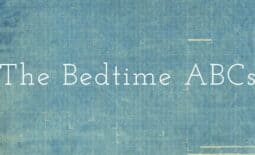Introducing a Nap Routine
One thing I always recommend to new families who come to me for help with sleep is to make sure they have a really good, solid routine. This goes for day time as well as night time. Nap issues are often the hardest to sort out, despite what society or the media might tell you about broken sleep and sleepless nights. It is always easier to fix nighttime sleep issues than it is to sort out naps- but that doesn’t mean its impossible! One of the best things you can do is to introduce a nap routine, and in this post I’ll let you know when to do it and how.
 Before the age of around six months, your baby won’t really have a clear daytime routine. Try as you might, there is just too much happening and too many changes to really pin it all down for most babies. That said, you know your baby best and if you think that your baby is ready for a routine then by all means you can try out my tips. It’s important to remember that I do not advocate leaving a baby to cry, and this means for naps too. There is no need to put you or your baby through that, so don’t panic. Continue with your gentle sleep training methods through the daytime and your nap routine will follow.
Before the age of around six months, your baby won’t really have a clear daytime routine. Try as you might, there is just too much happening and too many changes to really pin it all down for most babies. That said, you know your baby best and if you think that your baby is ready for a routine then by all means you can try out my tips. It’s important to remember that I do not advocate leaving a baby to cry, and this means for naps too. There is no need to put you or your baby through that, so don’t panic. Continue with your gentle sleep training methods through the daytime and your nap routine will follow.
Choose your nap location
It might be that you have a busy schedule and you can’t always be home for naps. That’s fine! You need to do what works for you and your family so don’t stress if you can’t be at home every day. If, however, your baby is fairly intense and requires a good deal of structured routine it might make things a lot easier if you can juggle things around to be home when sleep calls. This is up to you, but whatever you do make sure that you have a good nap location sorted. Stroller, bassinet, crib- its up to you. Follow safe sleeping guidelines, ensure the space is dim and free from stimulation and you’re good to go.
Plan around your naps
Hopefully, depending on the age of your baby, you already know how much awake time is needed before nap time. I recommend the 2-3-4 routine for babies over 6 months old- awake for 2 hours, nap, awake for 3 hours, nap, awake for 4 hours, bed for the night. With 2 hours total nap, it makes a 12 hour day. This makes it a lot easier to plan your day around naps, and to leave enough time to wind down sufficiently for sleep. You can also see this post for advice on winding down before sleep.
Stay consistent
My number one tip for establishing any kind of routine, and so important when it comes to naps! You really do need to stick with it. Stay consistent and clear in your aims and your baby will have an easier time adjusting and settling into the routine. If you’re all over the place with timings and expectations your baby will become unsettled and sleep will become more evasive than ever.
Don’t over stimulate your baby
Its a common misconception that your baby will sleep better if you tire them out. This just doesn’t not happen! Over stimulation results in an over tired baby and this will make it harder for them to settle down to sleep- plus it can make it harder for your baby to stay asleep too. Watch for sleep cues and act on them.
Stay flexible
Yes, a nap routine is important, but the last thing you want to do is to become fixated on that. Staying flexible means that you’re better able to respond to your baby’s needs and whatever the day has thrown at you. Perhaps an earlier overall wake up might mean the whole day needs to shift forward as a result, or maybe your baby finds it harder to sleep on one particular day thanks to a cold, or teething, or something else. Stay flexible and take each day as it comes.
Do get in touch if you’d like specific advice about naps and introducing a nap routine.



